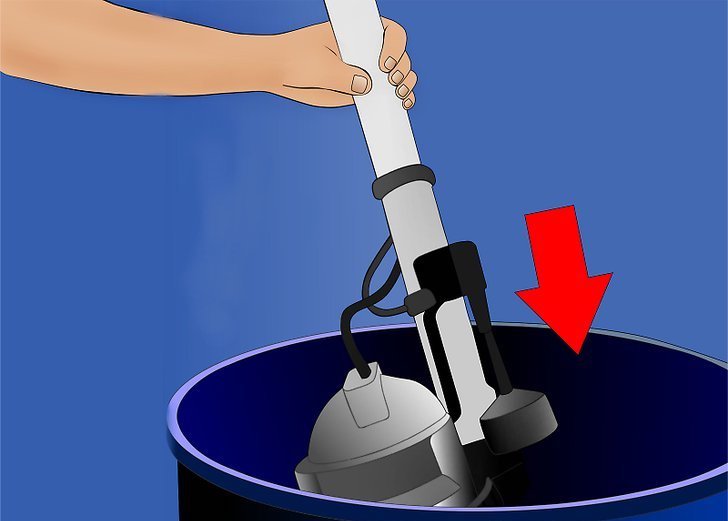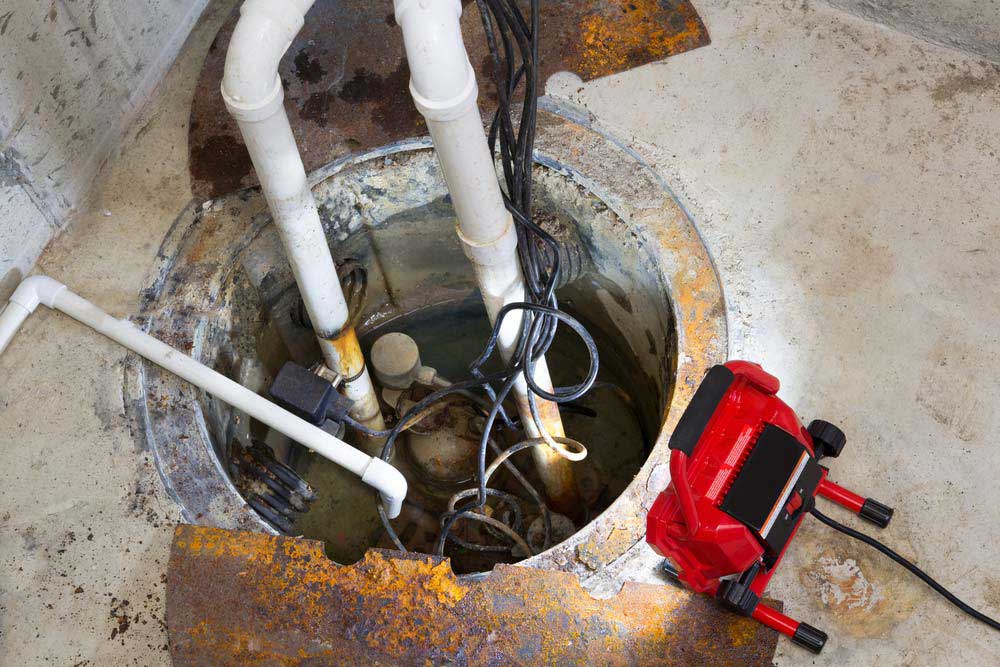Top Steps for Cleaning Your Sump Pump
Top Steps for Cleaning Your Sump Pump
Blog Article
Just how do you actually feel about How to Care for Your Sump Pump?

Sump pumps are vital components in several homes, specifically in areas vulnerable to flooding or extreme dampness. They assist prevent water damage by successfully removing excess water from cellars or crawl spaces. Nevertheless, like any other device, sump pumps require routine upkeep to ensure they work successfully when required the most. Cleaning your sump pump is an essential part of its upkeep, and recognizing just how to do it properly can save you from costly repair work and prospective catastrophes.
Intro
Preserving a tidy sump pump is crucial for its proper performance and long life. Disregarding this crucial job can bring about obstructions, malfunctions, and ultimately, water damages to your residential or commercial property. Therefore, finding out just how to cleanse a sump pump is crucial for homeowners that rely on these devices to keep their basements completely dry and protected.
Indicators of a Dirty Sump Pump
Understanding when your sump pump needs cleaning is vital for preventing prospective malfunctions. Some common indicators that indicate an unclean sump pump include odd sounds during procedure, lowered water flow, and visible particles in the pit. If you notice any of these signs, it's essential to clean your sump pump quickly to prevent any kind of more problems.
Planning for Cleansing
Prior to you start cleansing your sump pump, it's vital to take some safety and security precautions. Beginning by shutting off the power to the pump to stay clear of any kind of electrical accidents. In addition, put on proper protective gear, such as gloves and safety glasses, to secure yourself from dirt, particles, and possible virus.
Comprehending the Sump Pump
Before diving right into the cleansing process, it's vital to have a fundamental understanding of how a sump pump functions. Normally installed in a pit or basin listed below the basement flooring, a sump pump contains a number of crucial parts, including a pump, a float switch, and a discharge pipeline. When water gathers in the pit, the float switch activates the pump, which after that pumps the water out with the discharge pipe, away from the building's structure.
Step-by-step Guide to Cleaning a Sump Pump
Turning off the Power
Begin by separating the power supply to the sump pump to prevent any mishaps while cleansing.
Looking For Appropriate Performance
Prior to re-installing the pump, do a fast examination to make sure that the float button turns on the pump appropriately. Pour some water into the sump pit and observe the pump's operation. If every little thing is functioning correctly, you can reconstruct the pump and reconnect the power supply.
Eliminating Debris and Dirt
Use a bucket or a scoop to eliminate any type of visible debris, dirt, or sediment from the sump pit. Dispose of the particles properly to stop it from obstructing the pump or the discharge pipeline.
Cleaning up the Pump and Float Switch
As soon as the pit is free from debris, thoroughly eliminate the pump from the pit. Inspect the pump and the float button for any type of signs of damages or wear. Use a soft brush or towel to cleanse the surfaces and get rid of any type of built up crud.
Flushing the System
After cleaning the pump and float switch, purge the sump pit with clean water to eliminate any kind of staying dust or debris. This will certainly assist make sure that the pump runs efficiently and efficiently.
Maintenance Tips to Maintain Your Sump Pump Clean
In addition to routine cleaning, there are numerous maintenance pointers you can comply with to keep your sump pump in ideal condition:
Final thought
Cleaning your sump pump is a crucial element of its upkeep and makes certain that it runs efficiently when you need it one of the most. By adhering to the steps detailed in this overview and integrating regular maintenance into your regimen, you can extend the life-span of your sump pump and protect your home from water damage.
6 STEPS ON HOW TO CLEAN A SUMP PUMP PROPERLY
UNDERSTANDING SUMP PUMPS
Your sump pump plays a crucial role in protecting your home by managing and removing excess water. It primarily functions as a “shield”, guarding your basement against the damaging effects of water accumulation. The pump is housed in a sump pit in the lowest part of your basement, and its job is to pump out any water that collects there.
During heavy rainfalls or when snow melts rapidly, water can infiltrate your basement, posing potential risks like flooding, structural damage, and harmful mold growth. Here, the sump pump springs into action, pumping out the intruding water and directing it away from your home.
SAFETY FIRST
Before cleaning, remember to prioritize safety. Disconnect the sump pump from the power source to prevent any accidental electric shocks. Also, wear sturdy gloves to protect your hands from any sharp or dirty components within the pump.
REMOVE THE SUMP PUMP
After ensuring your safety, the next step is to remove the sump pump from its pit. Doing this might require careful maneuvering as you don’t want to damage any pump components. Once removed, clean the sump pit to remove any accumulated debris or sludge.
INSPECT THE PUMP
Inspect the pump for any visible signs of wear or damage. Check the power cord, float switch, and impeller housing. If any components look worn out or damaged, consider replacing them to ensure optimal performance.
CLEAN THE PUMP
Thoroughly clean the pump with warm, soapy water. Make sure to rid it of any dirt, gravel, or other debris that might impede its performance. You can use a toothbrush to clean the small, hard-to-reach parts of the pump.
REINSTALL THE SUMP PUMP
Reinstall the pump into the sump pit Make sure it’s positioned correctly to remove the water effectively Once it’s back in place, reconnect it to the power source TEST THE PUMP
Finally, pour some water into the pit to ensure the pump works correctly. It should start automatically and begin pumping out the water; if it doesn’t, check the power source and the positioning of the pump.
Remember, while cleaning your sump pump is an essential part of home maintenance, hiring a professional plumber for a thorough inspection and cleaning at least once a year is also important. This will ensure that your pump is in optimal condition, ready to protect your home from potential water damage.
BEST PRACTICES FOR CLEANING SUMP PUMP DISCHARGE PIPES
Regular Inspection: Regularly inspect your discharge pipes, especially during heavy rainfall or snowmelt periods. Look for any signs of blockage or damage. Early detection of problems can prevent serious issues down the line. Periodic Cleaning: Over time, sediment and debris can accumulate in the discharge pipes, impeding the flow of water. Regular cleaning helps keep the pipes clear and functioning efficiently. You can use a high-pressure water jet to effectively clean the pipes. Insulation During Winter: In colder climates, discharge pipes can freeze, blocking the outflow of water. Protect your discharge pipes from freezing temperatures by insulating them with foam pipe insulation. This will ensure the sump pump can continue to discharge water even in freezing conditions. Proper Positioning: The discharge pipe should be positioned to direct water away from your home’s foundation. Improper positioning can lead to water seeping back into the basement. Ensure the pipe is long enough and angled correctly. Installation of a Check Valve: A check valve prevents water from flowing back into your sump pit after the pump has pushed it out. Installing a check valve helps maintain the efficiency of your sump pump and reduces the risk of flooding. Minimize Pipe Turns: Every curve or turn in the discharge pipe can decrease the efficiency of water flow. By minimizing turns and bends in your discharge pipe, you can increase the efficiency of your sump pump. https://www.fullspeedplumbing.com/how-to-clean-a-sump-pump-properly9999/

We were introduced to that report on How to Care for Your Sump Pump from a good friend on a different website. Kindly pause to promote this page if you enjoyed reading it. I truly appreciate your readership.
Request Free Estimate Report this page